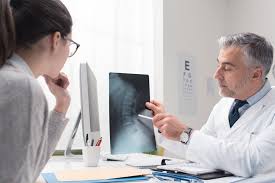Massage therapy is more than a luxury; it’s a holistic approach to enhancing physical and mental well-being. Its origins trace back thousands of years, reflecting a rich tapestry of cultural practices and scientific advancements. This article delves into the multifaceted world of 다낭 가라오케 분위기는 어떤지 한번 알아볼까요 , exploring its history, techniques, benefits, and modern applications.
A Historical Perspective
Massage has been a cornerstone of human wellness for millennia. Ancient civilizations, including the Egyptians, Chinese, and Greeks, integrated massage into their health practices. The Egyptians used massage to soothe sore muscles and promote relaxation, while Chinese practitioners incorporated it into their traditional medicine, emphasizing energy flow and balance. Greek athletes were known to use massage to improve performance and recovery.
The development of massage techniques continued through the centuries. In the 19th century, Swedish physiotherapist Per Henrik Ling developed the Swedish massage system, which remains one of the most popular forms of therapeutic massage today.
Techniques and Methods
Massage encompasses a variety of techniques, each with its own set of benefits and applications. Here are some of the most commonly practiced styles:
- Swedish Massage: This technique uses long, flowing strokes, kneading, and circular movements on the topmost layers of muscles. It’s designed to improve circulation, reduce stress, and promote relaxation.
- Deep Tissue Massage: Focused on the deeper layers of muscle and connective tissue, deep tissue massage targets chronic muscle tension and pain. It often involves slower strokes and more intense pressure.
- Shiatsu: A Japanese form of massage, Shiatsu involves applying pressure to specific points along the body’s meridians to balance energy flow. It’s based on principles from traditional Chinese medicine and aims to harmonize the body’s energy.
- Thai Massage: This technique combines elements of yoga, acupressure, and Indian Ayurveda. Practitioners use their hands, feet, and elbows to stretch and compress the body, promoting flexibility and energy flow.
- Hot Stone Massage: Heated stones are placed on specific points of the body and used as an extension of the therapist’s hands to relax muscles, improve circulation, and alleviate tension.
- Aromatherapy Massage: Incorporates essential oils into the massage to enhance the therapeutic effects. Each oil has different properties, such as calming, invigorating, or balancing, which can be tailored to individual needs.
Benefits Beyond the Surface
The benefits of massage extend far beyond mere relaxation. Research has shown that massage therapy can have significant impacts on both physical and mental health:
- Pain Relief: Massage can alleviate pain from conditions such as chronic back pain, arthritis, and migraines. By reducing muscle tension and improving circulation, it helps in managing and mitigating discomfort.
- Improved Circulation: The manipulation of muscles and tissues during massage enhances blood flow, which can accelerate healing and boost overall cardiovascular health.
- Stress Reduction: Regular massage has been shown to decrease levels of cortisol, the body’s stress hormone, while simultaneously increasing levels of serotonin and dopamine, which help improve mood and promote relaxation.
- Enhanced Flexibility: Massage techniques such as stretching and kneading can help maintain and improve flexibility, which is essential for overall mobility and injury prevention.
- Mental Clarity: The relaxation achieved through massage can lead to clearer thinking and improved concentration. By reducing stress and promoting a sense of well-being, massage supports mental health and cognitive function.
Integrating Massage into Modern Life
In today’s fast-paced world, incorporating massage into one’s lifestyle can be a valuable investment in health and well-being. Many people schedule regular sessions with professional massage therapists, while others explore self-massage techniques or use massage tools at home.
Moreover, the advent of technology has led to the development of innovative massage devices, from handheld massagers to sophisticated massage chairs, offering convenience and accessibility for at-home care.
Conclusion
Massage therapy is a timeless practice that continues to evolve, blending ancient wisdom with modern science. Whether sought for relaxation, pain relief, or overall well-being, its benefits are profound and far-reaching. As we navigate the complexities of contemporary life, embracing the art and science of massage can be a powerful tool for enhancing our physical and mental health, providing a sanctuary of peace and rejuvenation in our daily routines.
